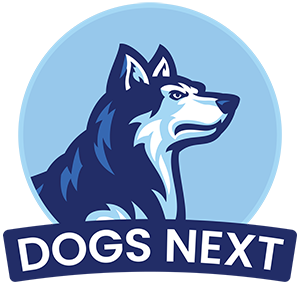To unspoil a dog, establish clear boundaries and maintain consistent training. Reinforce good behavior with positive reinforcement.
Many dog owners inadvertently spoil their pets, leading to behavioral issues. Spoiled dogs may develop habits like excessive barking, jumping, or even aggression. To remedy this, dog owners must establish firm boundaries and provide consistent training. Positive reinforcement, such as treats and praise, can help reinforce desired behaviors.
Gradual changes in routines and expectations will ensure your dog adapts smoothly. A balanced approach combines firmness with affection, ensuring the dog feels secure yet understands limits. By addressing these issues, your dog can become more well-behaved and happier. Regular exercise and mental stimulation also play crucial roles in maintaining a well-balanced pet.
Identifying Spoiled Behaviors
Dogs are wonderful companions, but sometimes we may unintentionally spoil them. Unspoiling a dog is crucial for their well-being and your peace of mind. The first step in this process is identifying spoiled behaviors. Knowing what to look for can help you correct these habits and foster a healthier relationship with your furry friend.
Demanding Attention
Dogs naturally seek attention, but a spoiled dog will demand it excessively. This behavior can manifest in several ways, such as:
- Constant barking or whining
- Jumping on people
- Interrupting your activities
To identify if your dog is demanding attention, observe their actions:
| Behavior | Description |
| Barking | Your dog barks non-stop until you pay attention to them. |
| Jumping | Your dog jumps on you or guests frequently. |
| Interrupting | Your dog interrupts your work or leisure activities for attention. |
To address this, start by not giving in to their demands. Ignore the barking or whining and wait for them to calm down. Reward good behavior with attention and treats.
Food Begging
Food begging is another sign of a spoiled dog. This usually happens when dogs associate begging with receiving food. Common indicators include:
- Sitting by the table during meals
- Pawing at you while you eat
- Whining or barking for food
To curb this behavior, follow these steps:
- Do not feed them from the table. This reinforces bad behavior.
- Provide a designated eating area for your dog away from the dining table.
- Use commands like “go to your spot” to redirect their attention.
Consistency is key. Make sure everyone in the household follows these rules to avoid mixed signals.
Disobedience
Disobedience is a major sign of being spoiled. If your dog ignores commands or does not follow rules, they may be spoiled. Look for these signs:
- Not coming when called
- Ignoring commands like “sit” or “stay”
- Engaging in forbidden behaviors like jumping on furniture
To correct disobedience, try these tips:
| Action | Explanation |
| Consistent Training | Regularly practice commands with your dog. |
| Positive Reinforcement | Reward good behavior with treats and praise. |
| Set Boundaries | Establish clear rules and stick to them. |
Patience and persistence will help your dog understand and follow the rules. Reward their compliance to reinforce good behavior.
Steps To Unspoil A Dog
Dogs, just like children, can become spoiled if not given proper guidance. Spoiled dogs often exhibit undesirable behaviors like excessive barking, jumping on people, or demanding attention. To unspoil a dog, owners must take deliberate steps. These steps include consistent training, setting boundaries, reducing treats, ignoring attention-seeking behavior, and ensuring structured play and exercise.
Consistent Training
Consistent training is key to unspoiling a dog. A dog needs clear expectations and consistent reinforcement to understand what is acceptable. Here are some steps to follow:
- Daily Training Sessions: Train your dog every day, even if it’s just for a few minutes.
- Use Positive Reinforcement: Reward good behavior with treats, praise, or playtime.
- Stay Patient: Be patient and persistent. Training takes time.
Consistency also means every family member must follow the same rules. If one person allows bad behavior, the dog gets confused. Create a training schedule and ensure everyone sticks to it. This way, the dog receives the same message from everyone.
Setting Boundaries
Setting boundaries helps a dog understand limits. Dogs need to know what they can and cannot do. Here are ways to set boundaries:
- Designate Spaces: Create specific areas where the dog can and cannot go.
- Use Commands: Teach commands like “stay”, “sit”, and “leave it”.
- Enforce Rules: Do not allow begging at the table or jumping on furniture.
Using baby gates or barriers can help define physical boundaries. Dogs should also have their own space, like a bed or crate, where they can retreat and feel safe. Consistent enforcement of these boundaries ensures the dog knows its place in the home.
Reducing Treats
Reducing treats is essential for unspoiling a dog. Excessive treats can lead to health issues and reinforce bad behavior. Follow these steps:
- Limit Treats: Use treats sparingly and only for training purposes.
- Healthy Alternatives: Offer healthy snacks like carrot sticks or apple slices.
- Measure Portions: Keep track of treats given to avoid overfeeding.
Creating a treat schedule can help manage the dog’s diet. For example, give treats only during training sessions or special occasions. This way, treats remain a reward and not an expectation.
Ignoring Attention-seeking
Ignoring attention-seeking behavior can help correct a spoiled dog’s behavior. Dogs often bark, whine, or nudge for attention. Here’s how to handle it:
- Avoid Eye Contact: Do not look at the dog when it seeks attention improperly.
- Stay Silent: Do not talk to or scold the dog during attention-seeking behavior.
- Reward Calmness: Only give attention when the dog is calm and quiet.
It might be hard at first, but staying consistent is crucial. Over time, the dog will learn that only good behavior gets rewarded with attention.
Structured Play And Exercise
Structured play and exercise keep a dog mentally and physically stimulated. A tired dog is less likely to engage in bad behavior. Here are some tips:
- Daily Walks: Ensure your dog gets at least one long walk each day.
- Interactive Toys: Use toys that challenge your dog’s mind.
- Playtime Schedule: Set specific times for play each day.
Incorporate different activities like fetch, tug-of-war, or agility training. Structured play not only tires out the dog but also strengthens the bond between you and your pet.
Positive Reinforcement Techniques
Dogs can easily become spoiled if they receive too many treats or too much attention without proper training. To unspoil a dog, using positive reinforcement techniques is essential. These methods not only help correct undesirable behavior but also strengthen the bond between you and your furry friend. Positive reinforcement focuses on rewarding good behavior, making it more likely your dog will repeat those actions in the future.
Rewarding Good Behavior
Rewarding good behavior is a cornerstone of positive reinforcement. When your dog performs a desired action, immediately reward them to establish a connection between the behavior and the reward. This approach helps your dog understand what you expect from them.
Here are some effective ways to reward good behavior:
- Treats: Use small, healthy treats that your dog loves.
- Praise: Verbal affirmations like “Good boy!” or “Well done!” work wonders.
- Playtime: A few minutes of play can be a great reward.
- Affection: Petting or a gentle pat on the head can be very rewarding.
Consistency is key. Make sure to reward the good behavior immediately and every time it occurs. This will help your dog understand what behaviors are acceptable. You can also use a combination of rewards to keep things interesting for your pet.
Here’s a simple table to illustrate the types of rewards and their benefits:
| Type of Reward | Benefit |
| Treats | Immediate gratification, easy to administer |
| Praise | Strengthens bond, easy to give |
| Playtime | Fun for the dog, encourages exercise |
| Affection | Builds trust, comforting for the dog |
Avoiding Punishment
Avoiding punishment is just as crucial as rewarding good behavior. Punishment can create fear and anxiety, leading to more behavioral issues. Instead of punishing your dog, focus on redirecting their behavior.
Here are some tips for avoiding punishment:
- Ignore Unwanted Behavior: Sometimes, the best response is no response. Ignoring bad behavior can teach your dog that it won’t get them what they want.
- Redirect Attention: If your dog is doing something undesirable, redirect their attention to a more appropriate activity.
- Use Time-Outs: A short time-out can help your dog calm down and understand that their behavior is not acceptable.
Using these methods helps you avoid negative interactions with your dog. This fosters a more positive and trusting relationship. Remember, the goal is to teach your dog what behaviors are acceptable without instilling fear or anxiety.
Here’s a simple table to compare the effects of punishment versus positive reinforcement:
| Method | Effect |
| Punishment | Causes fear, anxiety, and confusion |
| Positive Reinforcement | Builds trust, encourages good behavior |
Patience And Consistency
Unspoiling a dog requires patience and consistency. Dogs, like humans, need time to learn new behaviors. They thrive on routine and clear expectations. Without these, they may become confused or frustrated. Being patient means understanding your dog’s pace. Consistency ensures they know what to expect. This combination helps in reshaping their behavior effectively.
Staying Committed
Commitment is key to unspoiling your dog. Change doesn’t happen overnight. It requires daily effort and dedication. Here are some tips to stay committed:
- Set Clear Rules: Decide what behaviors are acceptable and which are not.
- Stick to a Routine: Dogs love routines. Feed them, walk them, and train them at the same times each day.
- Be Consistent with Commands: Use the same words for commands every time. This helps your dog understand what you want.
Consistency helps your dog learn faster. For example, if jumping on the couch is not allowed, make sure everyone in the household enforces this rule. Mixed signals confuse dogs and slow down progress.
Here’s a table to help you keep track of your commitment:
| Day | Activity | Completed |
| Monday | Training Session | ✔️ |
| Tuesday | Training Session | ✔️ |
| Wednesday | Training Session | ✔️ |
Use this table to track your daily activities. This visual aid helps you stay on track and ensures you don’t miss any sessions.
Tracking Progress
Tracking your dog’s progress is essential. It helps you see what works and what doesn’t. Start by creating a progress journal. Write down the behaviors you’re working on and any changes you notice. Use a simple format like this:
| Date | Behavior | Notes |
| 01/01 | Stopped Begging | Still tries occasionally |
| 01/02 | Stopped Begging | Less frequent attempts |
| 01/03 | Stopped Begging | No attempts today |
Tracking progress helps you identify patterns. If your dog is improving, celebrate those wins. If not, adjust your approach. Remember, each dog is unique. What works for one might not work for another.
Here are some additional tips for tracking progress:
- Take Photos or Videos: Visual records can show subtle changes over time.
- Use a Reward System: Mark milestones with small rewards. This encourages both you and your dog.
- Review Regularly: Look at your progress journal weekly. This helps you stay focused and motivated.
By staying committed and tracking progress, you’ll see positive changes in your dog’s behavior. Remember, patience and consistency are your best tools.
Frequently Asked Questions
How Do You Discipline A Spoiled Dog?
Use consistent training and positive reinforcement. Establish clear rules and boundaries. Reward good behavior with treats and praise. Avoid physical punishment. Be patient and consistent.
How Can You Tell If A Dog Is Spoiled?
A spoiled dog often shows signs like excessive barking, demands for attention, reluctance to follow commands, and possessiveness over toys or food.
Is It Possible To Untrain A Dog?
Yes, you can untrain a dog. Consistent retraining and positive reinforcement help modify unwanted behaviors. Patience and persistence are key.
Why Is My Dog Being A Brat?
Your dog might be acting out due to boredom, lack of exercise, or inconsistent training. Ensure proper mental and physical stimulation.
Conclusion
Transforming a spoiled dog into a well-behaved pet requires patience and consistency. Implement positive reinforcement techniques and set clear boundaries. Remember, a balanced approach ensures long-term success. Stay committed, and your dog will thrive with improved behavior and a happier disposition.
Your dedication will make a significant difference.

I’m David, an expert contributor and writer, with two furry friends of my own, I know the challenges of raising and caring for dogs. From training to nutrition and health, my goal is to provide valuable insights and advice to help create strong bonds and happy, healthy lives. Find me in Twitter.


